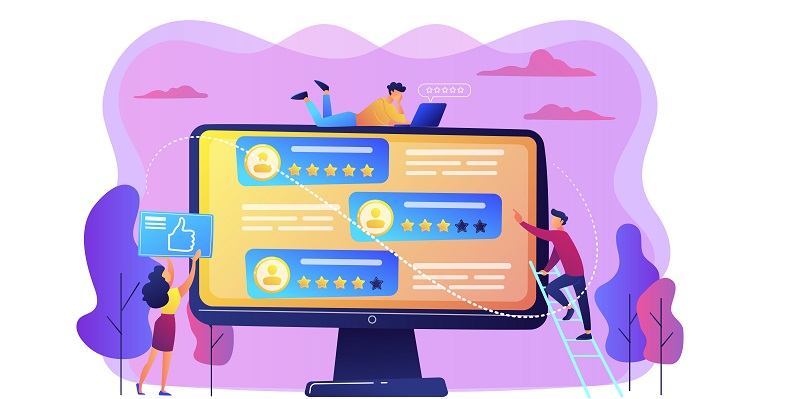In today’s digital age, businesses are inundated with vast volumes of data pouring in from various sources. The problem? These massive amounts of data aren’t always easy to thoroughly ingest, analyse, and leverage. Fortunately, there is a solution – the customer data platform (CDP). These innovative solutions aggregate all kinds of structured and unstructured data from multiple sources to create a single unified repository.
The role of customer data platforms (CDPs) is to aggregate and unify data from multiple sources
CDPs serve as the vital bridge that gathers data from various touchpoints, including websites, mobile apps, social media, customer service interactions, and more. By unifying all this data into a single comprehensive database, CDPs provide businesses with a holistic view of their customers. This ability can be a game-changer for brands looking to realize the full potential of their data and elevate the customer experience.
The potential impact of CDPs on enhancing the customer experience
At a time when 71% of consumers say they expect personalized experiences, a thorough profile on a customer’s preferences and behaviours allows brands to quickly figure out which products or services will resonate with them the most. CDPs enable businesses to gain deep insights into each customer’s journey, allowing them to deliver personalized experiences and targeted marketing campaigns that generate higher engagement and conversion rates.
The benefits of eliminating data silos
One of the major impediments to leveraging customer data effectively is the presence of data silos. These isolated repositories of information within organizations hinder the seamless flow of insights and prevent a holistic understanding of the customer. CDPs break down these silos, allowing businesses to consolidate their data from different sources and departments. This unified approach helps stakeholders across the organization access and utilize data more effectively, resulting in improved business decision-making and enhanced customer experiences.
The importance of personalization in today’s consumer expectations
In an era of hyper-personalization, customers demand tailored experiences that cater to their specific needs and preferences. By utilizing a CDP, businesses can deliver highly personalized experiences at scale. Understanding the complete customer profile, from past interactions to current interests and preferences, enables businesses to create tailored offers, recommendations, and communication strategies. This personalized approach not only drives customer satisfaction but also fosters long-term loyalty.
Efficiency gains for customer experience departments through centralized data
Having data in one place can create new efficiencies for customer experience departments. With a centralized view through CDPs, teams can quickly access relevant customer insights, analyse purchase patterns, and anticipate customer needs. This empowers them to respond with agility and proactively address issues, resulting in improved customer satisfaction and loyalty. Furthermore, by automating certain processes through CDPs, customer experience teams can focus on more strategic activities that ultimately drive business growth.
Enabling consistent and personalized offers and experiences across different channels
CDPs can support consistency by using prior purchase data to inform offers and experiences that a customer can access across email, social media, and your website. This cohesive approach guarantees a seamless customer journey, where customers receive personalized recommendations and offers that align with their interests and preferences, regardless of the channel with which they interact. By providing a unified and consistent experience, businesses can foster deeper customer engagement and build stronger brand loyalty.
The need for proper integration is necessary to fully realize the benefits of a CDP
Because CDPs function as a “central hub” for data, the only way to truly secure the benefits of a CDP is to properly integrate it. Integration involves seamless collaboration between IT, marketing, sales, and customer service functions to ensure a frictionless flow of data. This integration allows businesses to harness the power of a CDP to its fullest potential, as disparate data sources become interconnected and accessible.
The challenges of data quality and cleansing in managing diverse data sources
While CDPs offer immense value in aggregating customer data, it is crucial to address data quality and cleansing challenges. Cleaning and ensuring the accuracy and consistency of data across different sources can be time-consuming. However, investing in robust data management practices, including data validation, regular updates, and the removal of duplicates or outdated information, is essential to maintaining data integrity. Accurate and reliable data lays the foundation for effective customer analyses and predictive modeling, enabling businesses to make informed decisions.
Addressing privacy and security concerns in implementing a CDP
Implementing a CDP involves handling sensitive customer data. While integrating data while maintaining privacy and security standards can be tricky, it’s a must-do. Adhering to data protection regulations and implementing robust security measures not only ensures customer trust but also safeguards businesses against potential data breaches. By implementing strong encryption, access controls, and data anonymization techniques, organizations can strike a balance between leveraging customer data and safeguarding privacy.
In conclusion, customer data platforms (CDPs) have emerged as vital tools for businesses to unlock the true potential of their data and enhance the customer experience. By centralizing and unifying data from multiple sources, CDPs enable personalized offerings, efficient customer experience management, and consistent omni-channel experiences. However, to fully reap the benefits of a CDP, integration, data quality, and stringent privacy measures are imperative. With careful implementation, organizations can harness the power of CDPs to create meaningful, personalized experiences that drive customer satisfaction, loyalty, and business success.

